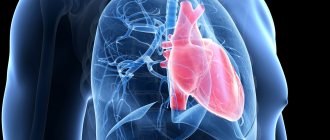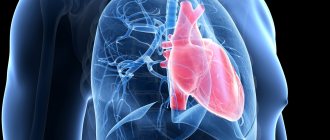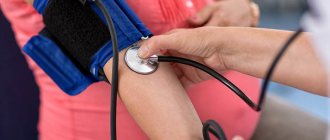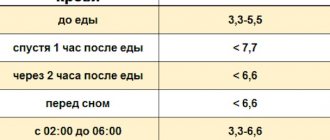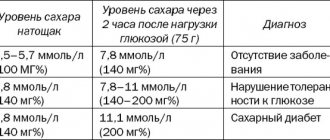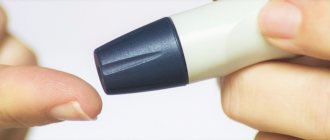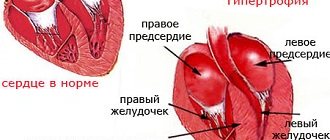Diabetes mellitus is common in patients with hypertension and significantly increases the risk of cardiovascular disease, including myocardial infarction, stroke, and peripheral vascular disease. Pharmacological therapy in patients with hypertension and diabetes is controversial due to concerns about the metabolic effects of some antihypertensive agents, as well as concerns about the safety of calcium antagonists. Therefore, diet, lifestyle changes and knowledge about proper prevention of disease progression are the key to maintaining health and reducing the risk of developing cardiovascular complications.
Factors affecting blood pressure
The cause is unknown in most cases. This is called essential hypertension. The pressure in the blood vessels depends on how hard the heart pumps blood and how much resistance the blood vessels (arteries) offer. The slight narrowing of the arteries is thought to increase resistance to blood flow, which increases blood pressure.
What Causes High Blood Pressure?
Most people don't have a single reason. However, there are a number of things that increase the likelihood of its occurrence. These are the so-called risk factors:
- The influence of nicotine.
- Excessive consumption of salt or processed foods (convenience foods, canned foods, smoked foods).
- Alcohol abuse.
- Having excess weight.
- Insufficient physical activity.
- Private stress, which provokes the release of adrenaline and cortisol.
In addition, diabetic nephropathy, a complication that develops in some people with diabetes, can cause hypertension in patients with diabetes. In this condition, the kidneys are damaged, which can cause high blood pressure due to damage to the arteries, arterioles, tubules and glomeruli of the kidney tissue. It is more common in people with type 1 diabetes. In rare cases, high blood pressure is caused by other medical conditions. This is then called secondary hypertension. For example, kidney problems or hormonal imbalances can cause high blood pressure.
Where to lay the straw?
– There is an opinion that to protect against heart attack and stroke after 40 years, everyone, especially men, should take cardiac aspirin. This is right?
– There is no pill that is ideal for everyone. And if you prescribe aspirin to everyone (without taking into account age or the presence of concomitant diseases), then you can get not benefit, but harm. After all, aspirin increases the risk of internal bleeding and can be dangerous, for example, with peptic ulcers and other diseases. But if the patient already suffers from coronary heart disease or has suffered a myocardial infarction, then the benefits of aspirin are undeniable. But an individual, personalized approach is definitely needed. As doctors of the old school said, it is necessary to treat not the disease, but the patient.
Article on the topic
Cholesterol is no longer harmful: old myths and new facts
– Is it true that low cholesterol does not mean that a person is protected from heart attack and stroke? They used to be afraid of high cholesterol, but now they are saying that it is not a threat...
– Talking about safe cholesterol levels is the same as calculating the average temperature in a hospital. The average approach is only good for statistics. And in life, a person with low cholesterol may have some other risk factors. For example, smoking, physical inactivity or arterial hypertension. And they may well lead to a heart attack. Conversely, high cholesterol may be the only risk factor. In this case, the risk of a heart attack is relatively low. In addition, cardiologists pay attention not to the level of total cholesterol, but to the increase in one of its fractions - LDL (low-density lipoproteins).
How is blood pressure measured?
Blood pressure is measured using a device called a tonometer. A cuff (thick tape) is placed on the arm.
As air is inflated, the cuff tightens and then slowly relaxes again. During this relaxation, you can listen to the pulsation of the arteries and record the first and last tone to record blood pressure readings. Blood pressure is measured in millimeters of mercury. After the study, the result will be recorded in two numbers: the first is systolic pressure (during ventricular contraction), the second is diastolic pressure when the heart muscle is at rest. According to the principle of operation, tonometers are automatic and manual. When using a manual tonometer, air is pumped using a special bulb, and the first and last tone is heard using a stethoscope.
The automatic blood pressure monitor inflates the cuff and catches the pulse itself. Also, such devices measure heart rate and have a built-in memory for recording readings. It is much more convenient than manual ones, especially for older people.
Treatment and prevention of high blood pressure
To avoid a diagnosis of hypertension, patients with diabetes need to adjust their lifestyle in the following ways:
- Maintain a healthy weight. Overweight people should try to lose weight, while people of normal weight should avoid gaining weight. If you are overweight, losing just 5 kg can help prevent hypertension. Talk to your doctor about the most appropriate weight for you.
- Eat a balanced diet. Eat plenty of fruits and vegetables, especially those rich in potassium, and limit your intake of excess calories, fat and sugar. Consider following the Dietary Approaches to Control Hypertension, or DASH diet, which has been shown to help control blood pressure in patients with diabetes.
- Reduce the amount of salt. A low-sodium diet can help maintain normal blood pressure. The higher your sodium intake, the higher your blood pressure. You can reduce your overall salt intake by avoiding packaged and processed foods that are high in sodium and not adding extra salt to your meals.
- Exercise regularly. Get moving to prevent hypertension. Physical activity is critical. The more you exercise, the better, but even light exercise can help control your blood pressure. Moderate exercise for 30 minutes three times a week is a good start.
- Limit your alcohol intake. Excessive alcohol consumption can lead to high blood pressure.
- Check your blood pressure regularly. If your doctor detects early signs of hypertension (prehypertension), additional precautions may be needed to correct the condition.
Take a look at your lifestyle and decide where you can make changes to prevent hypertension. Achieve small goals, like snacking on fruits and vegetables instead of junk food, and continue to practice these healthy habits until they become part of your daily life.
And they eat Russian lard!
– Previously, it was believed that only vegetables, fruits, and fish were good for the heart - in general, the Mediterranean diet. But recently, Israeli scientists suddenly rehabilitated salt. And lard doesn’t seem to be so harmful. Has cardiologists' views on cardiac nutrition changed?
- Changed. Recent evidence shows that the consumption of saturated fats (pork, eggs, full-fat milk) is less important for the cardiovascular system than the consumption of easily digestible carbohydrates, especially sugar. Therefore, sweets should be limited first of all. Trans fats are also harmful - processed palm oil, for example. But regarding salt, I absolutely agree with the recommendations of the Ministry of Health, which recognized its excessive consumption as a risk factor for cardiovascular diseases. And our European colleagues are of the same opinion.
However, the fact that fatty foods have been recognized as less dangerous than before does not mean that you can eat as much of it as you like. After all, a bathhouse is also useful, but only in moderation, and if you steam for too long, the vessels may not withstand it. Everything requires a reasonable approach.
Surprises of cardiology. Fat does not harm blood vessels, but omega-3 acids are useless Read more
– Many people do not trust medications, but they firmly believe in the benefits of dietary supplements. Is it true that omega-3 fatty acids protect blood vessels from atherosclerosis?
– It has been two years since the results of studies were published showing that pharmacological preparations containing omega-3 acids are completely useless for the prevention of heart and vascular diseases. Nevertheless, those fatty acids found in food (primarily in sea fish) are beneficial for the heart.
Treatment with medications
If you have diabetes, the use of antihypertensive therapy is recommended in cases where blood pressure remains at 140/80 mmHg. even when adjusting your lifestyle through diet, exercise, etc. Target blood pressure is below 130/80 mm Hg. Art. is mandatory if the patient has complications such as damage to the retina, kidney (nephropathy) or brain tissue (stroke).
There are several different medications that can lower blood pressure readings. The choice depends on things like:
- Do you have other health problems?
- Are you taking other medications?
- Possible side effects of the medicine.
- Patient's age and ethnicity.
The first group of drugs that is most often used is a drug called an angiotensin-converting enzyme (ACE) inhibitor. ACE inhibitors protect against kidney damage and also help control blood pressure.
One drug lowers blood pressure to target less than half the time. Therefore, this means that two or more different medications are usually required to achieve the target level (140/80 mmHg or below). In about a third of cases, three or more medications are needed to lower blood pressure to target levels. Therefore, patients with a combination of diabetes mellitus and arterial hypertension need regular consultations with doctors to monitor their health status and adjust treatment.
Why does the body need sugar and its blood levels?
Maintaining vital functions requires the presence of sugar in the food system, and in a certain amount. The product, when consumed in moderation, reduces the likelihood of atherosclerosis, thrombosis and arthritis, and stimulates the functions of the spleen and liver.
Sugar in the body is present in the form of a monosaccharide - glucose, which participates in all metabolic processes, playing the role of an energy supplier. Sugar levels, or more correctly, indicators of glucose concentration in the blood, are called glycemia. Accordingly, an excess of the normal level is hyperglycemia, a decrease in concentration below the norm is hypoglycemia.
A temporary drop in blood sugar can be caused by:
- diseases in acute and chronic form;
- physical or nervous stress;
- food low in carbohydrates;
- significant dietary disturbances.
As a result of hypoglycemia, a deterioration in well-being occurs, including loss of consciousness and coma. Constant relapses indicate a disruption in the functioning of the kidneys, adrenal glands, hypothalamus, and pancreas.
A one-time excess of sugar levels (hyperglycemia) may be associated with increased stress, including emotional stress, abuse of sweets and be temporary. To a mild degree, such deviations are not dangerous and pass quickly. Repeated diagnosis of excess glucose concentration in the blood indicates the presence of an endocrine disease:
- diabetes;
- hyperfunction of the thyroid gland;
- hypothalamic dysfunction;
- malfunction of the liver and pituitary gland.
In this case, hyperglycemia leads to metabolic disorders, decreased immunity, damage to blood vessels and tissues, internal organs, and death.
A blood test is performed to determine the concentration of glucose in the blood. The result is expressed in units: mol/l. The standards depend on the method of blood sampling, are determined by the patient’s age, and are also related to food intake. When taking material on an empty stomach from a finger (capillary blood) in an adult, the norm is considered to be an interval from 3.2 to 5.5 (mmol/l). If an analysis is taken from a vein, the upper limit moves to 6.2 mmol/l.
For elderly and elderly patients, the norm of the lower and upper limits is slightly higher (by about 1 mmol/l).
For newborn babies in the first month of life, the standard is: 2.8-4.4 mmol/l, and for children under 14 years of age it ranges from 3.3 to 5.6 mmol/l.
If the test result taken on an empty stomach is more than 7 mmol/l, the sample is repeated the next day. If high blood sugar levels are confirmed, the patient is at risk for diabetes. He is prescribed a test for glycated (glycosylated) hemoglobin to clarify the diagnosis.
